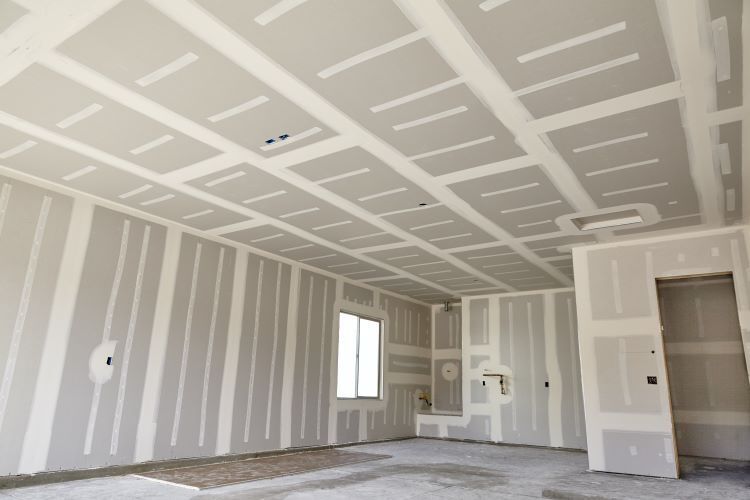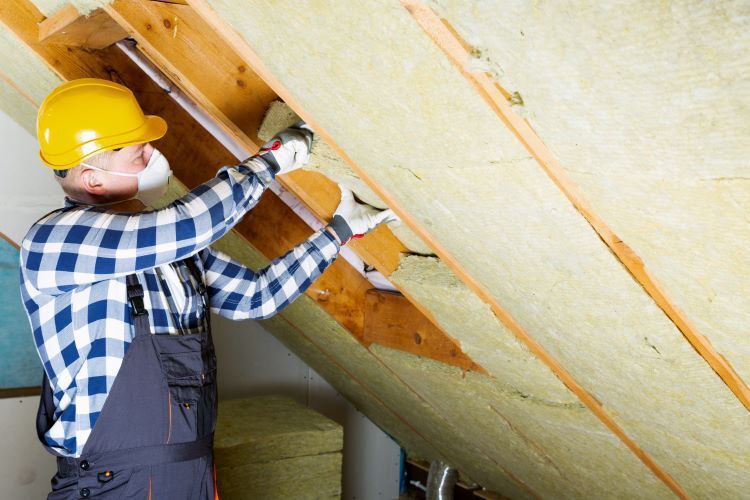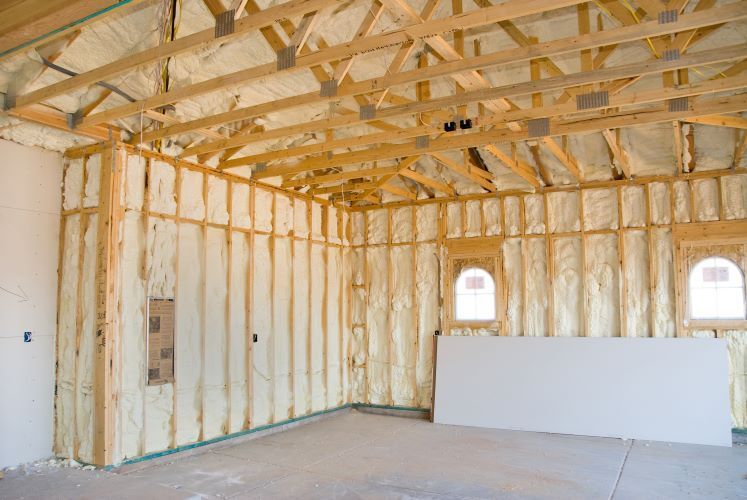Drywall Insulation Services
Insulation Benefits
Having the appropriate insulation in your walls and ceilings is a common practice that is done for properties of all variations in both residential and commercial sectors. Having the proper insulation in your home or business has numerous benefits.
-Saves you money
Without the adequate insulation in a building, the heating and cooling of that area will not be controlled properly and can end up driving up your bill in regards to heating and cooling.
-Limit the use of our natural resources
Like many of our loyal customers, we are proud Canadians who love our country. The heating homes and buildings in our nation is a large majority of the consumption to our natural resources. Having proper insulation in place ensures these resources are not being wasted.
-Create a more comfortable environment
Insulation ensures that the feeling in a room can be consistently maintained at a uniform temperature. Without that insulation in place the temperatures can become erratic making for a very uncomfortable atmosphere.
-More temperature benefits
Having that added padding between your walls and ceilings helps to keep any hot or cold air inside the insulation where it belongs. This means that in the hot summer months your walls, ceilings and floors will stay cooler and help the overall room to be cooler as well. The same holds true in the dreadful cold of winter, the extra padding inside will aid in keeping out that cold air and help the structure surfaces in your home or business stay much warmer.
Having the appropriate insulation in your walls and ceilings is a common practice that is done for properties of all variations in both residential and commercial sectors. Having the proper insulation in your home or business has numerous benefits.
-Saves you money
Without the adequate insulation in a building, the heating and cooling of that area will not be controlled properly and can end up driving up your bill in regards to heating and cooling.
-Limit the use of our natural resources
Like many of our loyal customers, we are proud Canadians who love our country. The heating homes and buildings in our nation is a large majority of the consumption to our natural resources. Having proper insulation in place ensures these resources are not being wasted.
-Create a more comfortable environment
Insulation ensures that the feeling in a room can be consistently maintained at a uniform temperature. Without that insulation in place the temperatures can become erratic making for a very uncomfortable atmosphere.
-More temperature benefits
Having that added padding between your walls and ceilings helps to keep any hot or cold air inside the insulation where it belongs. This means that in the hot summer months your walls, ceilings and floors will stay cooler and help the overall room to be cooler as well. The same holds true in the dreadful cold of winter, the extra padding inside will aid in keeping out that cold air and help the structure surfaces in your home or business stay much warmer.
Heating and cooling accounts for roughly 50 to 70% of energy used in an average home. Without the proper insulation in place your home could be wasting more energy than needed.
Request a free estimate!
We will get back to you as soon as possible.
Please try again later.
Types of insulation
When choosing the type of insulation, it’s important to know what kind of insulation is needed for the application its being used for. This can vary depending on whether it’s for a wall or ceiling, but one main determining factor is the R-Value of the insulation. R-Value can be complex but basically the higher the R-Value, the greater the insulating effectiveness, among other variables. Other factors related to the type of insulation needed are dependent on if the wall or ceiling is an exterior wall, meaning one side is the outdoors, or if it is strictly an interior wall or ceiling. Noise reduction is another factor to consider, varying types of insulation can restrict noise to different levels.
We understand it can be a daunting task to determine exactly what type of insulation is appropriate for your project. But that is why the experts from London Drywallers are here. Our organization has a wealth of knowledge and experience to help guide you through the entire process. Call us today and we can answer any questions you may have.
When choosing the type of insulation, it’s important to know what kind of insulation is needed for the application its being used for. This can vary depending on whether it’s for a wall or ceiling, but one main determining factor is the R-Value of the insulation. R-Value can be complex but basically the higher the R-Value, the greater the insulating effectiveness, among other variables. Other factors related to the type of insulation needed are dependent on if the wall or ceiling is an exterior wall, meaning one side is the outdoors, or if it is strictly an interior wall or ceiling. Noise reduction is another factor to consider, varying types of insulation can restrict noise to different levels.
We understand it can be a daunting task to determine exactly what type of insulation is appropriate for your project. But that is why the experts from London Drywallers are here. Our organization has a wealth of knowledge and experience to help guide you through the entire process. Call us today and we can answer any questions you may have.

Exceptional Drywall Services, on Budget, on Time
Button
Can the same insulation be used for either a wall or a ceiling?
Depending on which type of insulation material you use and how it's applied, it'll take a team of experienced workers to install. Many people ask if the same type of insulation can be used interchangeably for either a wall or a ceiling, and the answer to that is a definitive no. Wall insulation is not suited for ceiling applications, it comes in different thicknesses and widths which would not be suited for ceiling spaces. The same holds true when considering using ceiling insulation for walls. The easiest way to remember this is the simple rule of, wall insulation for walls, and ceilings for ceilings. Another factor is the R-Value, which for wall insulation the highest value it can reach is around 2.7, however for ceilings the recommended R-value needed is closer to 4 but could also reach as high as 6 or 8. These factors must be considered when installing insulation, otherwise the wrong types could be placed in the wrong areas and the whole job would be rendered useless.
Depending on which type of insulation material you use and how it's applied, it'll take a team of experienced workers to install. Many people ask if the same type of insulation can be used interchangeably for either a wall or a ceiling, and the answer to that is a definitive no. Wall insulation is not suited for ceiling applications, it comes in different thicknesses and widths which would not be suited for ceiling spaces. The same holds true when considering using ceiling insulation for walls. The easiest way to remember this is the simple rule of, wall insulation for walls, and ceilings for ceilings. Another factor is the R-Value, which for wall insulation the highest value it can reach is around 2.7, however for ceilings the recommended R-value needed is closer to 4 but could also reach as high as 6 or 8. These factors must be considered when installing insulation, otherwise the wrong types could be placed in the wrong areas and the whole job would be rendered useless.

London's #1 Drywall Service Company
Button



